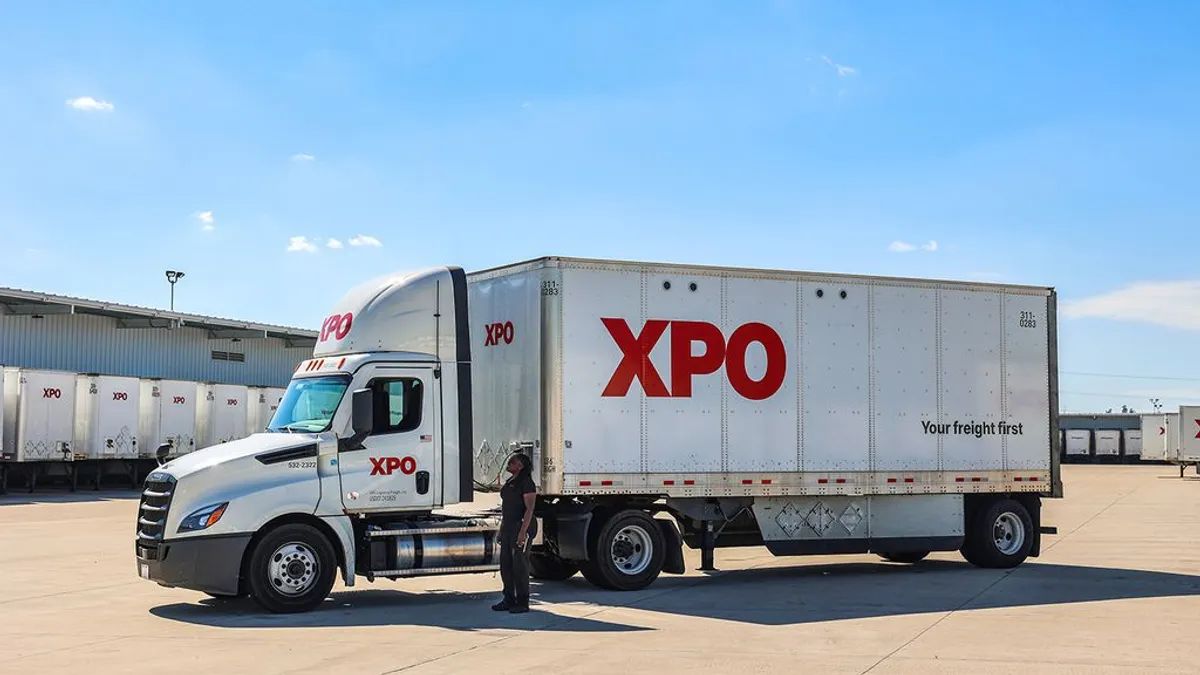Editor’s note: This story is part of a series highlighting takeaways from a July 24 event hosted by Supply Chain Dive, Trucking Dive and Manufacturing Dive. Register here to watch the replay on demand.
Whether disruptions are happening or not, shippers should have contingency plans in place, experts say, which was a hard lesson learned during the pandemic.
Though as that crisis subsided, 2024 has not been a smooth year for ocean shipping stakeholders. Risks along the Red Sea have created longer transit times, fueling congestion at some ports in Asia. Along with higher ocean rates and a looming East and Gulf Coast labor contract expiration, shippers are also facing a volatile ocean market.
Transport and logistics experts shared their take on the current risks shippers and carriers are facing along with strategies to mitigate supply chain disruptions during Industry Dive’s live event on July 24, “Supply Chain Outlook: Trends and Risks To Watch in 2024.”
Here’s what the experts suggest logistics industry stakeholders should do to best navigate the rest of the year.
Diversification: Back to basics
Supply chain disruptions loom at U.S. ports. The International Longshoremen’s Association’s master contract with the United States Maritime Alliance is set to expire on Sept. 30. While negotiations continue, experts suggest preparation is the best strategy to mitigate problems.
“As far as preparing, we have seen a good bit of the front loading of ocean freight cargo. The early peak season and some of that could be attributed to a potential strike to make sure that the retailers have their inventory and such,” Cathy Morrow Roberson, founder and president of Logistics Trends and Insights, said during the live panel.
Diversification is one tool shippers can tap to reduce potential disruptions — a lesson many retailers learned during the pandemic, Roberson said. During contract negotiations for West Coast dockworkers, shippers "learned to diversify their ports," she added.
Hedge cargo, don’t push it all
When service issues arise at the ports, trucking typically is the next segment to feel its impact, according to Paul Brashier, VP of global supply chain at ITS Logistics. He has been advising clients to stay away from areas that are problematic.
“Hedge, don't don't push everything to the U.S. West Coast,” he added.
One option is for certain SKUs to be moved through the Panama Canal to the East Coast. If possible, a shipper should avoid moving all cargo to the West Coast because “we are concerned about significant congestion,” he added, since there has been an increase in volumes shifting to those ports.
Another lesson learned from post-pandemic congestion is ensuring drivers can enter all the ports in certain regions, Brashier said. For example, making sure drivers coming from Southeast ports such as Jacksonville, Charleston, and Savannah can enter ports in the Northeast like Norfolk, New York, and Baltimore, he said.
Whether or not an East and Gulf Coast labor strike happens, the decisions around a potential strike can cause some ripple effects along the supply chain. Simply navigating the uncertainty is already changing patterns and bookings, Brashier said.
After navigating the West Coast port labor negotiations last year, Brashier recommends that shippers should be prepared for any service disruption situations. That can start with having the right capacity and adequate network that can operate outside and avoid problem areas while still fulfilling shippers’ needs. Second is visibility, Brashier added, “making sure you know, where your containers are, when they're going to discharge, where they're going to discharge, what's happening to them outside the terminal.”
Planning starts today
Another concern for shippers is possible peak season delays and what they should do to reduce risks. According to Robert Reiter, CEO of DHL Global Forwarding USA, peak season came early and will probably last for a couple of months.
In response to preparing for such delays, “contingency plans starts today,” Reiter said.
Reiter said delays emerged in the Transpacific Eastbound shipping lanes for the last six to eight weeks with some significant space shortage driven by uncertainty in the ocean market.
“If you look into Southeast Asia, we see port congestion all over the place already going on,” he said. “So this is not a topic that we expect. This is a topic that we are currently dealing with that triggers delays.”
Shippers should also foster stronger relationships with carrier partners, Reiter said, as well as leverage other freights modes such as intermodal and airfreight.
“It’s absolutely critical to stay agile [and] leverage the technology,” he said.














